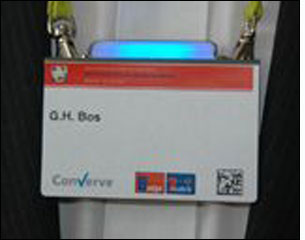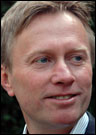Most conferences require attendees to “work the room,” introducing themselves to others in order to meet those with specific interests, such as people with whom they could conduct business. Now an events company in the United States, Wizard Studios Global Events, is marketing a solution from the Netherlands that employs radio frequency identification technology to bring the right people together in a crowd. The solution, which has been booked for several U.S. conferences in May 2011, consists of interactive RFID SmartBadge tags provided by Badge2Match that store data about an individual, transmit that information and capture data from other badges within 15 feet.
“When I found this product, I got very excited about it,” says Russell Brumfield, Wizard Studios’ CEO. “It’s a great way to meet people, to network, and it’s about meeting those you want to meet.”

First, Wizard Studios offers an online questionnaire tailored to each specific conference, which an attendee can fill out ahead of time. Attendees are asked about their profession, whether they are interested in specific products and whether they are attending to buy or sell products and services, or for some other reason. Upon arriving at an event, a visitor can go to a registration kiosk or desk, where he or she will then be issued a SmartBadge—an active ultrahigh-frequency (UHF) transponder (powered by two AAA batteries) that, according to Onno Bos, Badge2Match’s founder and CEO, was custom-made for this application by Vitelec. A staff member working at the registration desk can use a device known as a Transferbox (also manufactured by Vitelec specifically for this application) to encode the badge’s RFID tag with that individual’s likes and interests, based on his or her responses to the online questionnaire.
The badge, worn around the neck on a lanyard, continually transmits that data as the individual proceeds into an exhibit hall or meeting room. If the attendee comes within about 5 meters (16.4 feet) of someone with complementary interests, the badges of both visitors begin blinking. To help users identify their match in a crowded location, both badges flash a light of the same color (there are eight color options). The badges inform other nearby tags of their color choice, so that if those other tags detect their own matches, they would then select a different hue. As a result, if a conference-goer notices her badge flashing blue, she can look around the crowd until seeing another blinking blue light, and then simply introduce herself to that individual.
Wizard Studios will rent the badges either to event managers or to companies attending the conference, at a rate of $10 for one-day use, $12.50 for two days or $15.50 for three. The firm intends to offer the technology to dating-service providers as well, for singles social events, Brumfield says, and will call the RFID system RadarLove, to help singles meet those with similar interests, and then locate them using their SmartBadge.
Badge2Match has been providing the system in the Netherlands, as well as in France, Germany and China, since 2008, with 1,000 badges typically used at any given event. Before each conference, Bos says, the company’s staff configures the system and tests it, by answering the questionnaire, setting up a simulated conference environment, and determining if matches are properly captured, based on the questionnaire responses. This is necessary, he notes, since every event has a different set of questions, and thus different response matches that must be accommodated.
In Europe, Bos says, where Badge2Match charges about €12 ($17) per day per badge, the system has been well received. “People find it makes the event more interactive, and more fun,” he states. “It’s a great icebreaker, and you can leave a conference with great contacts.”
Bromfield predicts the solution will also be popular among users in the United States, where Wizard Events manages around 2,000 events every year.
In addition, Bos says, the solution could be utilized to track attendees’ movements, by attaching “sniffer beacons” (Vitelec readers) to walls, pillars or ceilings to capture RF signals from badges within their vicinity. Although such beacons have yet to be used, he says, they could store attendee-related data transmitted by the SmartBadges, and then be plugged into a computer via a USB cable to upload data to the Badge2Match server, where the collected information could be interpreted and made available to an end user.


